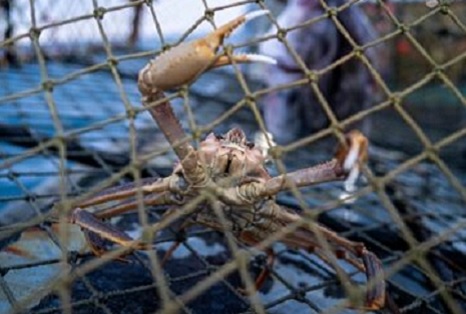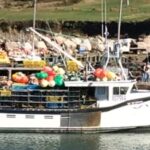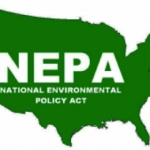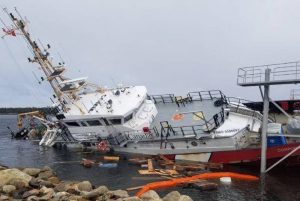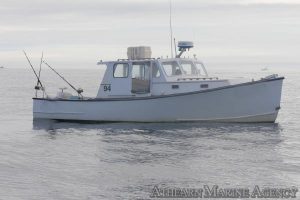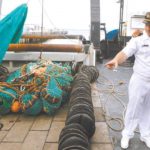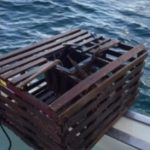Tag Archives: Alaska Bering Sea Crabbers
Regional council says it won’t tighten fishing regulations in Bristol Bay red king crab savings area
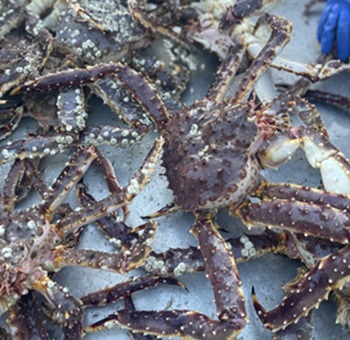 The North Pacific Fishery Management Council will not move forward with a request to close the Bristol Bay red king crab savings area to all commercial fishing. At its February meeting, the regulatory council looked at the effectiveness of closing the 4,000-square-nautical-mile section of the eastern Bering Sea to commercial trawl, pot and longline fishing, but decided not to tighten regulations in the area. The savings box was established in 1996 as a haven for the massive crab species. It is already permanently closed to bottom trawling, but it remains open to midwater, or pelagic trawlers, pot fishing and longlining. Non-pelagic, known as bottom trawling, is allowed in a small section within the savings area — known as the savings subarea — when crabbers are harvesting the species. The council also evaluated a pot gear closure of a large section in the eastern portion of Bristol Bay, known as Area 512, to address drops in the Bristol Bay red king crab stock. All trawling is already prohibited in that area. more, >>click to read<< 12:38
The North Pacific Fishery Management Council will not move forward with a request to close the Bristol Bay red king crab savings area to all commercial fishing. At its February meeting, the regulatory council looked at the effectiveness of closing the 4,000-square-nautical-mile section of the eastern Bering Sea to commercial trawl, pot and longline fishing, but decided not to tighten regulations in the area. The savings box was established in 1996 as a haven for the massive crab species. It is already permanently closed to bottom trawling, but it remains open to midwater, or pelagic trawlers, pot fishing and longlining. Non-pelagic, known as bottom trawling, is allowed in a small section within the savings area — known as the savings subarea — when crabbers are harvesting the species. The council also evaluated a pot gear closure of a large section in the eastern portion of Bristol Bay, known as Area 512, to address drops in the Bristol Bay red king crab stock. All trawling is already prohibited in that area. more, >>click to read<< 12:38
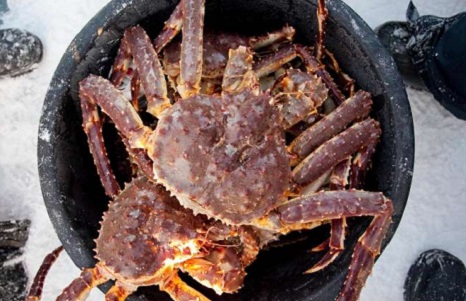
Bristol Bay red king crab, tanner crab fisheries open Sunday
The Bristol Bay red king crab fishery is back on track, after being closed for two years, with a total allowable catch of 2.15 million pounds – just a bit lower than when it was last opened in 2020 at 2.6 million pounds. The announcement on Friday, Oct. 6, was cheered by crab captains and Alaska Bering Sea Crabbers, as a way to get back out doing what they loved, pay some bills, and keep crew working, all while keeping the crab resource sustainable for generations to come. Veteran crabber Glenn Casto, captain of the FV Pinnacle, called it a start in the right direction, that will help pay some bills and help out crew. >>click to read<< 08:20

Alaska cancels snow crab harvest again due to population concerns
Crabbers from the Pacific Northwest who fish in Alaska had been watching and waiting for recommendations from the North Pacific Fishery Management Council, which met Thursday and Friday. Following the meetings, the Alaska Department of Fish and Game said Bering snow crab season will be closed for 2023-2024; Bristol Bay red king crab will open. Tanner crab will also be open for commercial fishermen. Both the snow crab and Bristol Bay red king crab seasons were closed in 2023. Crabbers and industry associations warned of the massive impact the decision would have on many small businesses, prompting calls by Congressional officials for an emergency declaration and federal aid. Video, >>click to read<< 08:18
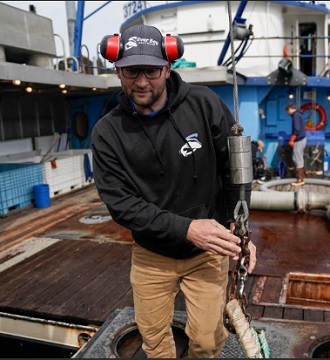
Alaskan fishers fear another bleak season as crab populations dwindle in warming waters
Gabriel Prout worked four seasons on his father’s crab boat, the Silver Spray, before joining his two brothers in 2020 to buy a half-interest plus access rights for a snow crab fishery that’s typically the largest and richest in the Bering Sea. Then in 2021, disaster: an annual survey found crabs crashing to an all-time low. Kevin Abena, who runs a fishing business with his father, also relies on tendering to stay afloat in the wake of the crab fishery closure. His vessel Big Blue, which his father built in the late 1970s, stopped fishing for most crab in Bristol Bay in 2010, but they still own access rights and take a percentage from other boats that fish their quota. Abena also fishes for halibut and black cod.>>click to read<< 12:31
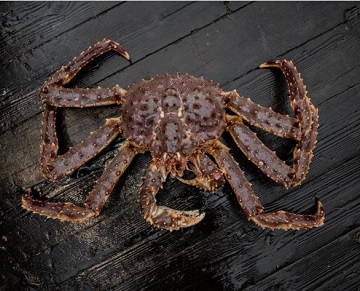
Urgent research to be undertaken on Bristol Bay Red King Crab
Urgent crab research will be getting underway in mid-March thanks to funds provided by both Alaska Department of Fish and Game and NOAA Fisheries, according to reports from Alaska Bering Sea Crabbers. The research is expected to use two chartered crab vessels with three scientists each, plus crew, to conduct research on Bristol Bay red king crab, including a pot survey, tagging, and gear studies. It will span roughly 25 days and begin in mid-March. The survey will set out to accomplish three main goals that may help inform management decisions in the future and will lay out important groundwork for future studies, >click to read< 08:31
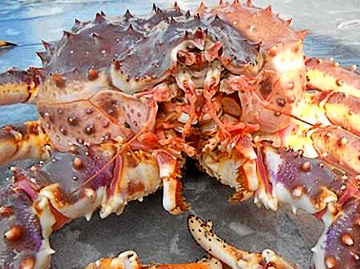
NOAA denies emergency request to close red king crab savings areas
The National Oceanic and Atmospheric Administration has denied an emergency request Friday to close crucial habitat for Bristol Bay red king crab to all types of commercial fishing. That comes after Alaska Bering Sea Crabbers petitioned in late September for a closure of the red king crab savings areas to protect the species during a time of historically low stocks. The savings area was established in 1996 and is permanently closed to bottom trawling, but it remains open to midwater trawlers, pot fishing and longlining. Bottom trawling is allowed, however, in a small section within the savings area, known as the savings subarea, when Bristol Bay red king crab is not open to directed fishing. >click to read< 09:15
Press release – NOAA Fisheries Denies Request for Emergency Action to Close the Red King Crab Savings Area and Subarea – >click to read<
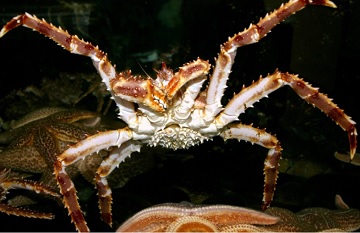
Fishery disaster aid and nearly $500 million worth of Alaska projects included in omnibus budget bill
Aid to Alaska fishermen, companies and communities was included in the year-end omnibus appropriations package that won final passage on Friday. The $300 million in aid funding follows official disaster declarations issued last week by U.S. Commerce Secretary Gina Raimondo for Alaska salmon and crab fishery failures dating back to 2020, as well as some salmon failures in Washington state dating back to 2019. The $300 million in total disaster aid “is a great start for much-needed money to help fishermen and communities pay their bills,” Jamie Goen, executive director of Alaska Bering Sea Crabbers, said in a statement. >click to read< 10:01

Alaska crab fishery collapse seen as warning about Bering Sea transformation
Less than five years ago, prospects appeared bright for Bering Sea crab fishers. Stocks were abundant and healthy, federal biologists said, and prices were near all-time highs. Now two dominant crab harvests have been canceled for lack of fish. For the first time, the Alaska Department of Fish and Game in October canceled the 2022-2023 harvest of Bering Sea snow crab, and it also announced the second consecutive year of closure for another important harvest, that of Bristol Bay red king crab. What has happened between then and now? A sustained marine heat wave that prevented ice formation in the Bering Sea for two winters, thus vastly altering ocean conditions and fish health. “We lost billions of snow crab in a matter of months,”,,, >click to read< 18:54

Disaster declaration unlocks potential federal aid for Alaska crabbers
A Commerce Department disaster declaration for Bering Sea crab and some Alaska and Washington salmon fisheries sets the stage for an end-of-the-year push to secure federal funds to help fleets and communities. The declaration announced Friday covers the Bristol Bay king crab harvests suspended for the past two years, and the snow crab harvest that next year will be canceled for the first time ever. Other fisheries covered by the declaration include the 2021 western Alaska Kuskokwim River salmon harvests as well as 2019 salmon fisheries in the Puget Sound and the 2020 Washington ocean salmon fisheries. >click to read< 08:04

Bering Sea crab collapse spurs push for stronger conservation measures
For Bering Sea crabber Gretar Gudmundsson, December is a month for preparing his two boats for the winter harvest season. But not this year. For the first time, the winter snow crab season has been scuttled. The move has upended seasonal rhythms, and the financial stability of a crab fleet already slammed by a two-year shutdown of the fall harvest of red king crab. “We didn’t ship up any groceries. We didn’t recruit any crew. We’re not laying on fuel. Nothing is happening,” Gudmundsson said. Crabbers are pressing for more restrictions on pollock fleets, which deploy large cone-shaped trawl nets to scoop up more than 3.2 billion pounds annually of this fish in the biggest single-species harvest in North America. >click to read< 11:55
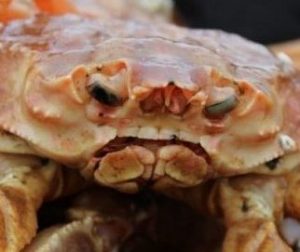
Did climate change really kill billions of snow crabs in Alaska? Here’s what experts say
Some fishers and crab experts have put forward a different idea: They’ve suggested that fishing, particularly the unintentional capture of crabs in fishing gear known as trawls, also contributed to the loss of the snow crab, or at the very least, impeded the species’ recovery from low population levels. The snow crab fishing season closure has amplified a chorus of concerns around Alaska’s trawling industry — mainly from within the fishery sector itself — and the knowledge gaps around its potential impact on fisheries. >click to read< 08:29
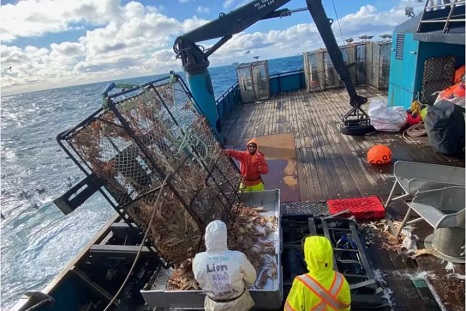
Disaster requests for Bering Sea crabbers highlight difficulty of getting financial relief to fishermen
The current process of getting financial relief to fishermen is cumbersome and takes a long time, but Bering Sea crabbers are hoping the plight of the snow crab population might change the way financial relief is delivered to fishermen. Gabriel Prout is a second-generation Bering Sea crab fisherman from Kodiak; he owns the F/V Silver Spray with his dad and brothers. He said there’s one big problem with the current process for handing out fishery disaster funding. “If you’re going to have a fishery disaster request program, you should be able to make it so the money is getting into the hands of those affected very quickly,” said Prout. Right now, it takes years for money to reach skippers and their crews. >click to read< 13:44
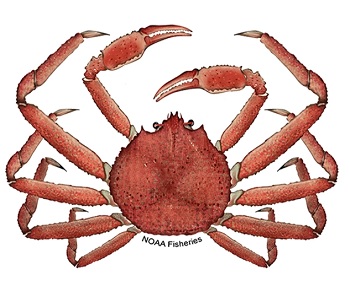
Did climate change really kill billions of snow crabs in Alaska?
In October 2022, the National Oceanic and Atmospheric Administration (NOAA) announced that the lucrative snow crab fishery in the Bering Sea would close for the first time, following a population decline of 80% between 2018 and 2022. While fisheries managers and biologists say climate change is to blame for the species’ retreat, some fishers and crab experts suggest that trawling bycatch and other fishing activity may have played a role in the snow crab’s decline. The fishery’s closure has amplified a chorus of concerns about Alaska’s trawling industry and the knowledge gaps around its potential impact on fisheries. The disappearance of billions snow crabs from the Bering Sea has captivated the world’s attention since Alaska shut down the fishery for the first time in October 2022. But where exactly did these snow crabs go? And what caused them to vanish so quickly? >click to read< 08:02
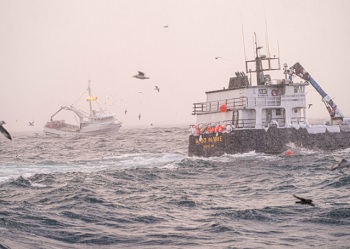
Massive losses predicted from Bering Sea crab closures
While other crab stocks have been declining in the North Pacific for years, the snow crab fishery’s collapse is doubly shocking for the industry. Not only is it one of the larger crab fisheries by volume in Alaska, it has also gone from booming and healthy to overfished and collapsing within five years, with little warning or clear explanation. Fishermen who made investments in permits and boats less than five years ago are now looking at bankruptcy. Alaska Bering Sea Crabbers, the trade organization representing the industry, has estimated the direct financial losses at about $500 million. Adding in the ripple effects to the economy, that estimate rises to about $1 billion. >click to read< 07:50
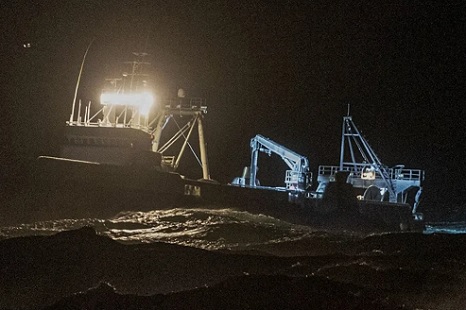
Conservation concerns cancel Alaska’s Bering snow, king crab seasons
Alaska officials have canceled the fall Bristol Bay red king crab harvest, and in a first-ever move, also scuttled the winter harvest of smaller snow crab. The move is a double whammy to a fleet from Alaska, Washington and Oregon pursuing Bering Sea crab in harvests that as recently as 2016 grossed $280 million. “I am struggling for words. This is so unbelievable that this is happening,” said Jamie Goen, executive director of the Alaska Bering Sea Crabbers. “We have third-generation fishermen who are going to go out of business.” >click to read< 14:47
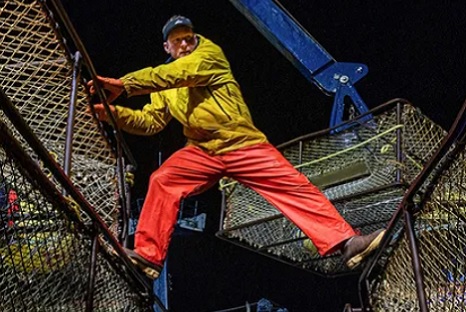
NMFS survey delivers more bad news to Bering Sea crab fleet
A Bering Sea survey by federal scientists contains more bad news for Alaska, Washington and Oregon-based crabbers hoping for an upturn in upcoming harvests that last year fell to rock-bottom levels. The federal survey results for Bristol Bay king crab are bleak and crabbers have been warned that for a second consecutive year there may not be a fall harvest, according to Jamie Goen, executive director of the Alaska Bering Sea Crabbers. “We have got an emergency,” Goen said. “I’m trying to get Congress to act to help.” The National Marine Fisheries Service survey does offer hope for improved harvests three to five years from now, as young snow crabs grow to adult size. >click to read< 12:20
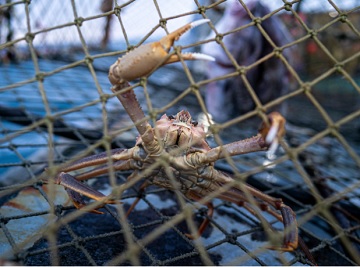
Scientists point to climate as likely cause for snow crab decline
Even as scientists are still trying to figure out why the Bering Sea snow crab stock crashed in 2021, federal managers are working on a plan to help rebuild it. Data from last year’s survey at this point seems to confirm that there was a massive decline in the number of young snow crab in the Eastern Bering Sea—something like 99% fewer female snow crab showed up in the survey from 2021. Jaime Goen, Alaska Bering Sea Crabbers, told the council that the crab industry is reeling from the revenue loss both in the snow crab fishery and the complete closure of the Bristol Bay red king crab fishery this year. What hurt was the suddenness — a few years ago, the crab stocks were looking hopeful and like a good investment, and many businesspeople and crew members bought in with the hopes those investments would pay off, she said. “Now those same people are facing bankruptcy,” >click to read< 22:00
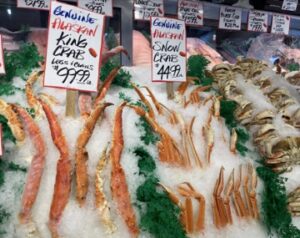
NPFMC wants more information on decline in king crab stocks
Two decades into the decline of Bristol Bay red king crab, with stocks now too low for a commercial fishery, the fight continues at the North Pacific Fishery Management Council over what protections to take for the crab in danger and how soon to do it. Alaska Bering Sea Crabbers had hoped that federal fisheries managers might put restrictions on groundfish fishing in the Red King Crab Savings Area, as well as other measures, during the NPFMC’s April meeting in Anchorage. Instead, the council voted to have staff prepare an expanded discussion paper for its October meeting that includes analysis of the impacts on annual or seasonal closures to pelagic trawl, groundfish, pot and longline gear in the BBRKA, including impacts on target catch, fishing timing relative to crab mating and molting, crab avoidance and other prohibited species catch and non-target species. >click to read< 11:27
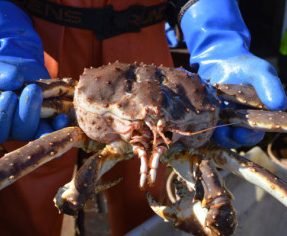
NPFMC wrestles with crab crisis – Disagreement in industry on expanding red king crab savings area
Commercial crab crews normally embarked on the Bristol Bay red king crab fishery are on the docks this October, with their fishery closed for lack of sufficient stocks, while federal fishery managers ponder how to restore the abundance required for the harvest to resume in coming seasons. During its October meeting, held virtually because of the ongoing pandemic, the North Pacific Fishery Management Council voted to request an analysis on likely impacts of expanding the red king crab savings area through emergency rule to shift the northern boundary from,,, >click to read< 08:15
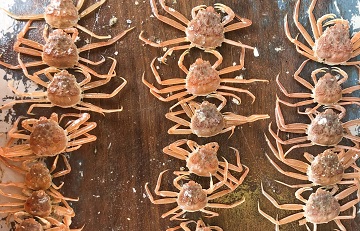
Alaska snow crab harvest slashed by nearly 90% after population crash in a warming Bering Sea
The snow crab is a mainstay of the Alaska crab boat fleet, much of it based in Washington, and the 2021-22 catch limit of 5.6 million pounds, announced Friday, is down 88% from the previous season. The 2021 fall harvest of Bristol Bay red king crab, another important source of revenue for that fleet, was canceled for this year because of too few females. The combined impacts of the closure and snow crab cutbacks are a big financial hit to crabbers who in past years have grossed more than $200 million from the two harvests. At a meeting of the North Pacific Fishery Management Council this week, crabbers called for additional restrictions in other harvests. >click to read< 09:30
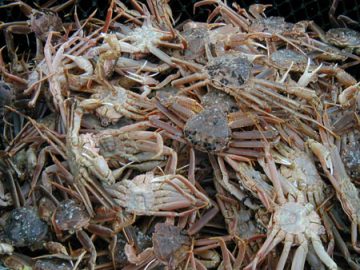
Valuable crab populations are in a ‘very scary’ decline in warming Bering Sea
The forecast for the 2022 winter snow crab season is bleak. At best, it is expected to be considerably less than 12 million pounds. That would be down from a 2021 harvest of 45 million pounds,,, The iconic Bering Sea red king crab, which can grow up to 24 pounds with a leg-span up to 5 feet, also are in trouble. In a big blow to the commercial crabbers, many of whom are based in Washington, the October harvest for these crab has been canceled, something that has only happened three times before. Overall conservation measures are expected to wipe out most of the value of the annual Bering Sea crab harvest, worth more than $160 million during the past year, according to Jamie Goen, executive director of the Seattle-based Alaska Bering Sea Crabbers. >click to read< 13:54

Bering Sea crab fleet braces for another blow
The commercial fishery has been around since 1966. In the 55 years since then, there have been just two other closures: once in the 1980s and again in the 1990s. The species is world-renowned and was largely made famous by the popular reality tv show “Deadliest Catch.” “It’s big news, and it’s hitting our industry really hard,” said Jamie Goen, executive director for Alaska Bering Sea Crabbers,,, “We’re disappointed and deeply concerned.” But, she said, it’s not only the fishermen who will be impacted. This hit affects everyone in the industry, roughly 70 vessels and over 400 fishermen and their families, along with the processors and fishing communities that rely on crab revenues. “We could kind of see a closure was coming, we just didn’t quite know when,” she said. >click to read< 08:36
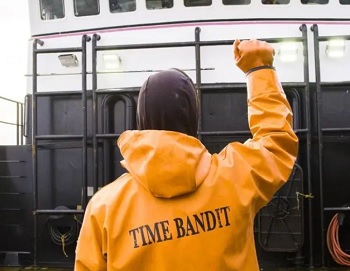
What do Deckhands earn and get paid on ‘Deadliest Catch’ and in the commercial crab industry?
There’s definitely money to be made in crab fishing, more if you star in a popular show about crab fishing. And the crab fishing industry is lucrative. While this is just a snapshot, it’s a pretty eye-opening one. According to a 2006 report, 505 commercial fishermen brought in over $127 million worth in crab loot. If that was evenly divided, it’d be $250,000 per person, but of course, things don’t work out that way. “Wages are often based on a share or percentage of harvest earnings. Newcomer deckhand earnings range from 1.5% to 10% of the adjusted gross catch, depending on location and type of fishery and the skills the worker possesses.” And it’s also situational: some crab fishers can make $50 to $100 a day as a flat rate if they want to play it safe. >click to read< 15:45

Behind the scenes with Seattle’s crab experts
It’s king crab season in the Bering Sea. That means around 300 people, including many from Fishermen’s Terminal in Seattle, the home port to the North Pacific Fishing Fleet, fly into Dutch Harbor, Alaska, for the harvest. And when king crab season is over, many of these fishermen and women switch to bairdi crab and snow crab. Which means they’ll be busy for four to five months and there will be a lot more crab on the market. As the executive director of Alaska Bering Sea Crabbers, a nonprofit trade association that represents the crab industry, Jamie Goen knows a lot about the work that brings crab from the bottom of the sea to our tables. >click to read< 09:19
The Washington fishing-industry battle over a federal council seat escalates
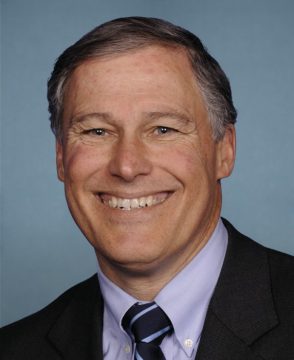 The Washington fishing-industry battle over a seat on the North Pacific Fishery Management Council has escalated as four industry groups sent a Thursday letter to Secretary of Commerce Wilbur Ross in support of Gov. Jay Inslee and his slate of three nominees. Leaders of the Freezer Longliner Coaltion, Alaska Bering Sea Crabbers, Deep Sea Fishermen’s Union and Fishing Vessel Owners Assocation all signed the letter. They sought to rebut an April 3 letter that President Donald Trump’s commerce secretary received from four other Washington industry groups that asked Ross to reject Inslee’s nominees because of what they said was a flawed nomination process. “We wish to register our strong disagreement with the April 3 letter,” they wrote. click here to read the story 20:11
The Washington fishing-industry battle over a seat on the North Pacific Fishery Management Council has escalated as four industry groups sent a Thursday letter to Secretary of Commerce Wilbur Ross in support of Gov. Jay Inslee and his slate of three nominees. Leaders of the Freezer Longliner Coaltion, Alaska Bering Sea Crabbers, Deep Sea Fishermen’s Union and Fishing Vessel Owners Assocation all signed the letter. They sought to rebut an April 3 letter that President Donald Trump’s commerce secretary received from four other Washington industry groups that asked Ross to reject Inslee’s nominees because of what they said was a flawed nomination process. “We wish to register our strong disagreement with the April 3 letter,” they wrote. click here to read the story 20:11
Alaska Bering Sea Crabbers announces US-Russia pact on illegal fishing
 A Seattle-based crabbing industry association is announcing a bilateral agreement between the United States and Russia that targets illegal, unregulated and unreported fishing. The Alaska Bering Sea Crabbers says the agreement was signed Friday as part of the 26th U.S.-Russia Intergovernmental Consultative Committee on Fisheries meeting in Portland, Oregon. The crabbing group represents 70 percent of the crap harvesters in Alaska’s Bering Sea and Aleutian Islands region. The association says the agreement signed Friday targets blatant poaching,,, Read the rest here 09:43
A Seattle-based crabbing industry association is announcing a bilateral agreement between the United States and Russia that targets illegal, unregulated and unreported fishing. The Alaska Bering Sea Crabbers says the agreement was signed Friday as part of the 26th U.S.-Russia Intergovernmental Consultative Committee on Fisheries meeting in Portland, Oregon. The crabbing group represents 70 percent of the crap harvesters in Alaska’s Bering Sea and Aleutian Islands region. The association says the agreement signed Friday targets blatant poaching,,, Read the rest here 09:43






